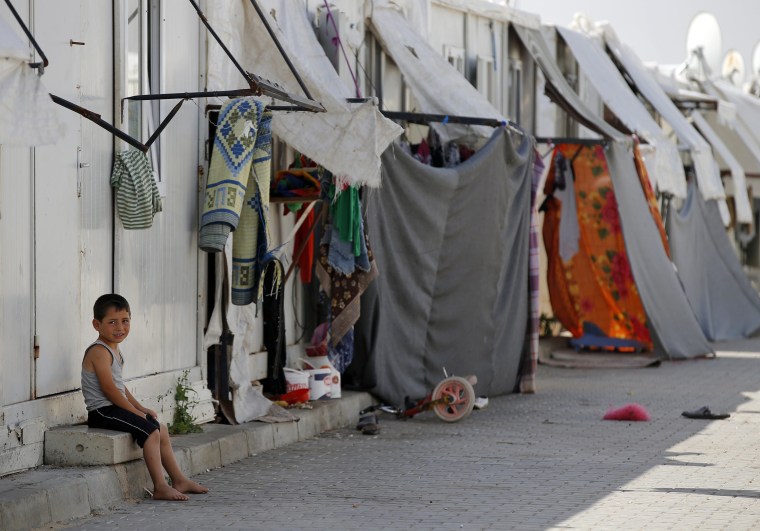The number of refugees last year hit the highest level in two decades, according to the U.N.
It released trend data on Monday — World Refugee Day — showing there were an estimated 16.1 million refugees worldwide at the end of 2015. Here's a look at the U.N.'s findings, by the numbers.
*****
By the end of last year there were 65.3 million forcibly displaced people worldwide — nearly twice the population of California — and 16.1 million refugees.
"If these 65.3 million persons were a nation, they would make up the 21st largest in the world," the U.N. report said.
That's a 55 percent rise in just four years, largely driven by the conflicts in Syria and Afghanistan.

*****
An estimated 12.4 million people were newly displaced due to conflict or persecution in 2015 — including 8.6 million people displaced within their own country's borders.

*****
The rate of displacement was provided in stark detail. The U.N. said that 24 people worldwide were displaced from their homes every minute of every day in 2015, or around 34,000 people per day. In 2005, it was six people per minute.

****
Fifty-four percent of all refugees worldwide came from just three countries — Syria, Afghanistan and Somalia. More than 1 million Syrian refugees were newly registered during 2015, bringing their total refugee population to 4.9 million. That compares to 3.9 million a year earlier and 2.5 million at the end of 2013.

There were around 2.7 million Afghan refugees and around 1.1 million Somali refugees in 2015, according to the U.N.
*****
The world's least developed countries gave asylum to 26 percent of the global refugees total. Lebanon hosted the most in relation to its population — or 183 refugees per 1,000 inhabitants. Jordan and Nauru ranked second and third, respectively.

*****
Children below the age of 18 made up about half of the refugee population in 2015, largely unchanged from a year earlier. However, there were around 98,4000 asylum applications filed by unaccompanied children in 2015 — the highest number on record since the U.N. refugee agency started collecting such data nearly 10 years ago.

*****
Last year also saw a record-high 2 million applications for asylum or refugee status. Germany was the country with the most applications — 441,900 — followed by the U.S. with 172,700 and Sweden with 156,400. Russia, meanwhile, received 152,500.

*****
UNHCR also estimates that at least 10 million people globally were stateless at the end of 2015, but the numbers recorded by governments and given to the agency put the number far lower.
The number of stateless people — individuals without a nationality — is estimated at around 500,000 in Thailand alone.

*****
Faced with an influx of refugees and migrants, some European countries — including Germany — have advocated returning them to their home nations. According to the U.N. data, only 201,400 refugees returned to their countries of origin in 2015. Most of those — 61,400 — returned to Afghanistan. Nearly 40,000 returned to Sudan and 32,300 to Somalia.

*****
For the second consecutive year, Turkey hosted the largest number of refugees — 2.5 million people. A recent EU-Turkey deal that allows Greece to return Syrian asylum-seekers to Turkey without evaluation of their protection claims on the basis it is a "safe third country" has drawn staunch criticism.

